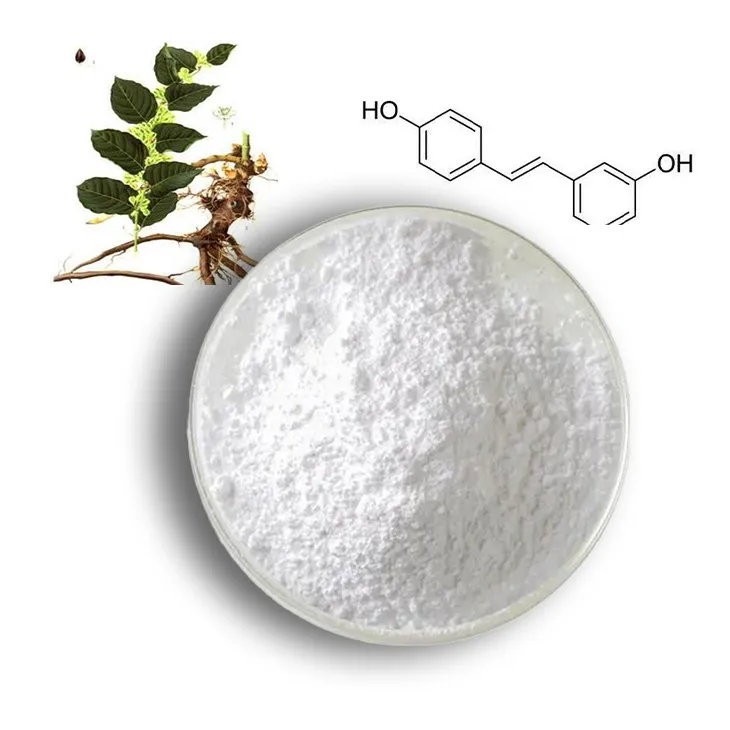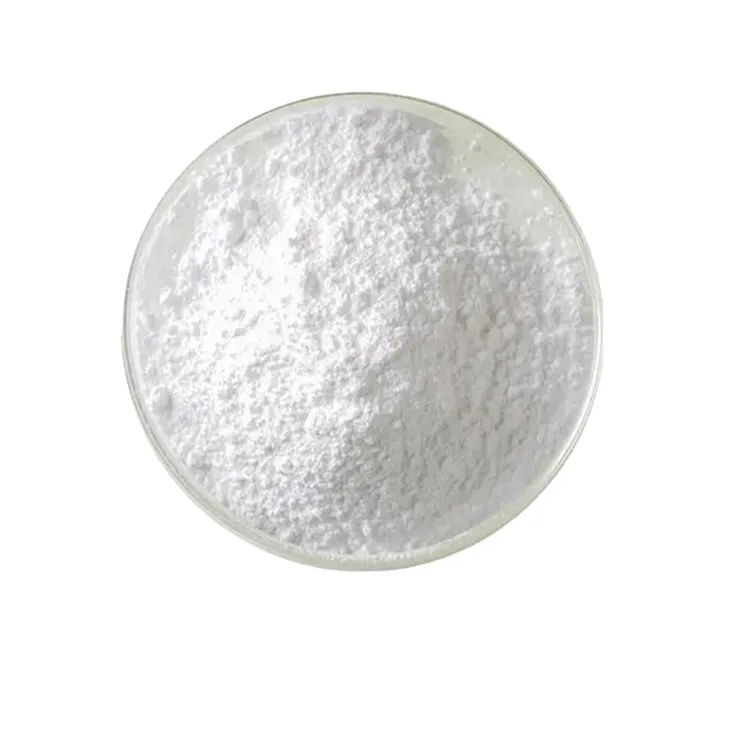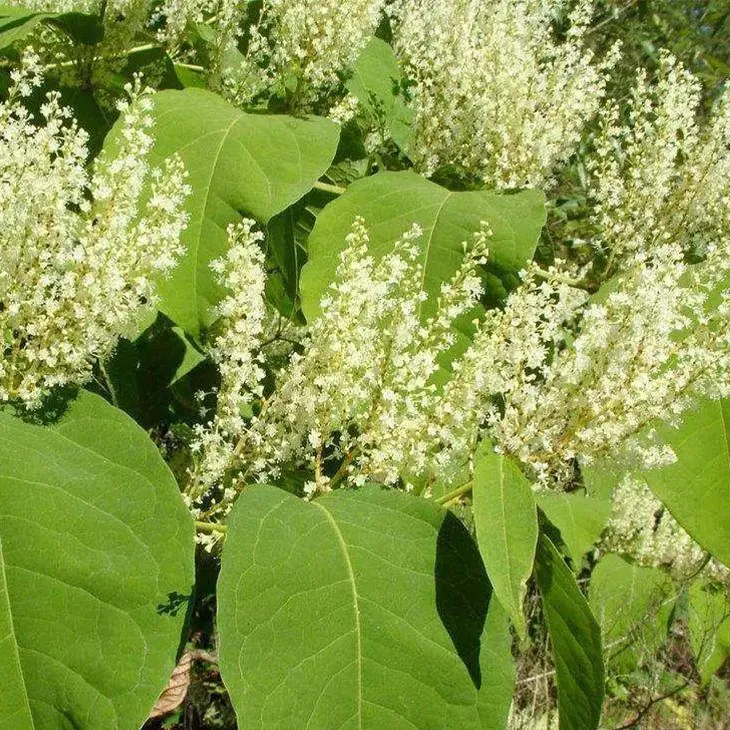- 0086-571-85302990
- sales@greenskybio.com
Extract resveratrol extract by using natural wood log method.
2024-11-26

1. Introduction
Resveratrol, a natural polyphenolic compound, has attracted significant attention in recent years due to its potential health - promoting properties. It is found in various plants, and in this study, we focus on the extraction of resveratrol from natural wood logs. Natural wood logs offer a unique source for resveratrol extraction, as they may contain different amounts of resveratrol depending on the type of wood. This extraction method not only has the potential to yield high - quality Resveratrol extract but also presents an environmentally friendly alternative to some synthetic extraction methods. The exploration of this method is crucial for the further development of resveratrol - based products in various industries such as the pharmaceutical and food industries.

2. The Importance of Resveratrol
Resveratrol has been associated with a wide range of health benefits. It is known for its antioxidant properties, which help in combating free radicals in the body. These free radicals can cause oxidative stress, which is linked to various diseases such as cancer, heart disease, and neurodegenerative disorders. By scavenging free radicals, resveratrol can potentially reduce the risk of these diseases. Moreover, resveratrol has also been studied for its anti - inflammatory effects. Chronic inflammation is another factor contributing to many diseases, and resveratrol's ability to modulate the inflammatory response makes it a promising compound for health promotion. Additionally, some research suggests that resveratrol may have anti - aging properties, affecting cellular processes related to aging.

3. Natural Wood Logs as a Source of Resveratrol
3.1 Different Types of Wood
Different species of trees have different compositions, and this also applies to the presence of resveratrol. For example, some hardwoods may contain higher levels of resveratrol compared to softwoods. Species such as grapevine wood, which is well - known for its association with resveratrol in the context of grapes, can also be a potential source when in the form of wood logs. Other trees like pine may also contain resveratrol, although the amounts may vary. The choice of wood type is an important factor in the extraction process as it can significantly influence the yield and quality of the Resveratrol extract.3.2 Factors Affecting Resveratrol Content in Wood
Several factors can affect the resveratrol content in natural wood logs. Environmental conditions play a role. Trees grown in different regions with varying soil types, climates, and sunlight exposure may have different resveratrol levels. For instance, trees exposed to more stress factors such as drought or pest attacks may produce more resveratrol as a defense mechanism. The age of the tree is also a factor. Older trees may have accumulated more resveratrol over time compared to younger ones. Additionally, the part of the tree used for extraction matters. The bark, sapwood, and heartwood may have different resveratrol concentrations.
4. The Extraction Process
4.1 Temperature
Temperature is a crucial factor in the extraction of resveratrol from natural wood logs. Different temperatures can affect the solubility of resveratrol in the solvent used. Generally, a higher temperature can increase the rate of extraction as it enhances the kinetic energy of the molecules, allowing for better interaction between the resveratrol in the wood and the solvent. However, too high a temperature may also lead to the degradation of resveratrol. Therefore, an optimal temperature range needs to be determined. For example, in some studies, a temperature range of 40 - 60°C has been found to be effective for resveratrol extraction without significant degradation.4.2 Extraction Time
The extraction time also plays an important role. Longer extraction times may increase the yield of resveratrol as more time allows for a more complete extraction of the compound from the wood matrix. However, after a certain point, the increase in yield may become marginal, and longer extraction times may also increase the risk of contamination or degradation. It is necessary to find a balance between extraction time and yield. In initial experiments, extraction times ranging from a few hours to several days can be tested to determine the optimal time for a particular wood type and extraction method.4.3 Solvent Type
The choice of solvent is critical in Resveratrol extraction. Solvents with different polarities can have different extraction efficiencies. Organic solvents such as ethanol and methanol are commonly used due to their ability to dissolve resveratrol effectively. Ethanol is often preferred as it is relatively safe, cost - effective, and has a suitable polarity for resveratrol extraction. However, water - based solvents can also be explored, especially in the context of more environmentally friendly extraction methods. Some studies have investigated the use of aqueous - ethanol mixtures, which can combine the advantages of both water and ethanol. Additionally, supercritical fluids such as supercritical carbon dioxide can also be used as solvents. Supercritical carbon dioxide has the advantage of being easily removable after extraction, leaving no solvent residue, which is highly desirable for applications in the food and pharmaceutical industries.
5. Optimization of the Extraction Process
To optimize the extraction of resveratrol from natural wood logs, a combination of factors needs to be considered. Experimental design methods such as response surface methodology can be employed. This involves designing a series of experiments with different combinations of temperature, extraction time, and solvent type. By analyzing the results of these experiments, an optimal set of extraction conditions can be determined. For example, a study might test different levels of temperature (e.g., 40°C, 50°C, and 60°C), extraction times (e.g., 2 hours, 4 hours, and 6 hours), and solvent compositions (e.g., different ratios of ethanol to water). The response variable could be the yield and purity of the resveratrol extract. Through statistical analysis of the data, the best combination of these factors can be identified to achieve the highest yield and quality of resveratrol extract.
6. Bioactivity of the Resveratrol Extract
Once the resveratrol extract is obtained from natural wood logs, its bioactivity needs to be evaluated. In vitro and in vivo studies can be conducted to determine its antioxidant, anti - inflammatory, and other potential health - promoting properties. In vitro studies can involve assays such as the DPPH (2,2 - diphenyl - 1 - picrylhydrazyl) radical scavenging assay to measure the antioxidant capacity of the extract. For anti - inflammatory properties, cell - based assays can be used to study the effect of the extract on inflammatory markers. In vivo studies may include animal models, where the resveratrol extract is administered to animals, and the effects on various physiological parameters are observed. These studies are essential to confirm the potential health benefits of the resveratrol extract obtained from natural wood logs and to provide a basis for its application in the development of health - promoting products.
7. Environmental Advantages of the Natural Wood Log Extraction Method
The extraction of resveratrol from natural wood logs using environmentally friendly solvents and methods offers several environmental advantages compared to some synthetic extraction methods. Firstly, the use of natural wood as a source is a renewable resource, as long as the trees are sustainably managed. This is in contrast to some synthetic sources that may rely on non - renewable raw materials. Secondly, the use of solvents such as ethanol or supercritical carbon dioxide, which are relatively environmentally friendly, reduces the environmental impact associated with the extraction process. For example, compared to some harsh organic solvents that may be toxic and difficult to dispose of, ethanol is biodegradable and has a lower environmental footprint. Supercritical carbon dioxide, when used as a solvent, can be recycled, further reducing waste. Additionally, the natural wood log extraction method may require less energy consumption compared to some complex synthetic extraction processes, contributing to a lower carbon footprint.
8. Applications of Resveratrol Extract in Different Industries
8.1 Pharmaceutical Industry
In the pharmaceutical industry, resveratrol extract obtained from natural wood logs can be used for the development of drugs or dietary supplements. Given its potential health - promoting properties, it can be formulated into products aimed at preventing or treating various diseases. For example, it could be used in the development of anti - cancer drugs or supplements for cardiovascular health. The antioxidant and anti - inflammatory properties of resveratrol make it a valuable compound for these applications.8.2 Food Industry
In the food industry, resveratrol extract can be added to various food products as a functional ingredient. It can be used in the production of fortified foods, such as health bars or beverages. The addition of resveratrol can enhance the nutritional value of these products and provide health - promoting benefits to consumers. However, regulatory requirements need to be met regarding the use of resveratrol in food, such as maximum allowable levels and safety evaluations.8.3 Cosmetic Industry
Resveratrol extract also has potential applications in the cosmetic industry. Its antioxidant properties can be utilized in anti - aging skincare products. It can help in reducing the signs of aging, such as wrinkles and fine lines, by protecting the skin from oxidative stress. Additionally, its anti - inflammatory properties may be beneficial for treating skin conditions such as acne or eczema.9. Challenges and Future Directions
Although the extraction of resveratrol from natural wood logs shows great potential, there are also some challenges that need to be addressed. One challenge is the variability in resveratrol content among different wood sources. This requires careful selection of wood types and standardization of the extraction process. Another challenge is the cost - effectiveness of the extraction method. While the use of natural wood logs may seem promising, the extraction process needs to be optimized to ensure economic viability. Future research should focus on further improving the extraction efficiency, exploring new wood sources, and developing more cost - effective extraction techniques. Additionally, more in - depth studies on the bioactivity of the resveratrol extract obtained from natural wood logs are needed to fully understand its potential health benefits and applications in different industries.
FAQ:
What are the main factors to consider in the resveratrol extraction process using natural wood logs?
Temperature, extraction time and solvent type are the main factors to consider. Different combinations of these factors can affect the extraction efficiency and the quality of the resveratrol extract.
Why are different types of wood logs different in resveratrol content?
Different types of wood logs have different genetic make - up, growth environments and physiological characteristics. These differences can lead to variations in the synthesis and accumulation of resveratrol, resulting in different resveratrol contents.
How can we ensure the high bioactivity of the resveratrol extract obtained from natural wood logs?
By optimizing the extraction process parameters such as temperature, extraction time and solvent type, we can ensure the integrity of resveratrol molecules and thus maintain its high bioactivity. Also, proper storage and handling of the extract are important to prevent degradation.
What makes the extraction method using natural wood logs more environmentally friendly?
Compared to some synthetic methods, the extraction from natural wood logs uses natural resources directly without the use of many synthetic chemicals. This reduces the generation of chemical waste and pollution, so it is more environmentally friendly.
What potential applications does the resveratrol extract from natural wood logs have in the health - promoting product development?
Resveratrol has antioxidant, anti - inflammatory and anti - aging properties. The resveratrol extract from natural wood logs can be used in dietary supplements, functional foods and cosmetics for promoting health, such as reducing the risk of chronic diseases and improving skin conditions.
Related literature
- Extraction and Bioactivity of Resveratrol from Natural Sources"
- "Resveratrol in Woody Plants: Occurrence, Extraction and Potential Applications"
- "Natural Wood Logs as a Promising Source for Resveratrol Extraction: A Review"
- ▶ Hesperidin
- ▶ citrus bioflavonoids
- ▶ plant extract
- ▶ lycopene
- ▶ Diosmin
- ▶ Grape seed extract
- ▶ Sea buckthorn Juice Powder
- ▶ Beetroot powder
- ▶ Hops Extract
- ▶ Artichoke Extract
- ▶ Reishi mushroom extract
- ▶ Astaxanthin
- ▶ Green Tea Extract
- ▶ Curcumin Extract
- ▶ Horse Chestnut Extract
- ▶ Other Problems
- ▶ Boswellia Serrata Extract
- ▶ Resveratrol Extract
- ▶ Marigold Extract
- ▶ Grape Leaf Extract
- ▶ blog3
- ▶ Aminolevulinic acid
- ▶ Cranberry Extract
-
Organic Tongkat Ali extract powder factory.
2024-11-26
-
How to make powder with ashwagandha extract.
2024-11-26
-
Rosehip extract manufacturers from China.
2024-11-26
-
The best cat's claw extract in nature.
2024-11-26
-
Chinese Dandelion Leaf Extract Suppliers.
2024-11-26
-
Mangosteen extract powder
2024-11-26
-
Agaricus Blazei Extract
2024-11-26
-
Panax Ginseng Leaf Extract
2024-11-26
-
Epimedium extract powder
2024-11-26
-
Citrus bioflavonoids
2024-11-26
-
Maca Extract
2024-11-26
-
Camu Camu Extract
2024-11-26
-
Baicalin
2024-11-26
-
Saponin Extract
2024-11-26
-
Red Wine Extract
2024-11-26





















